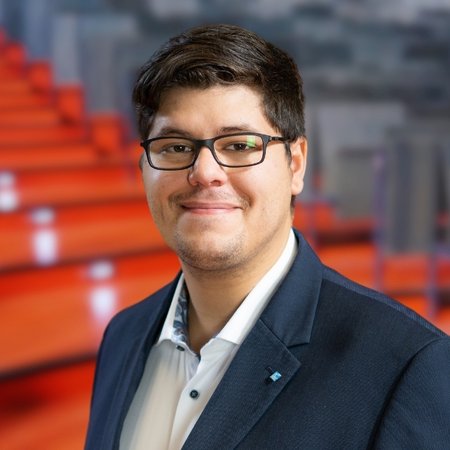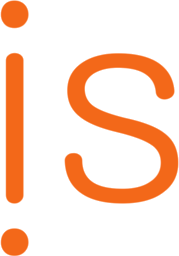Team

Assoziiertes Mitglied
Dr. Mohamed Kari
- E-Mail:
- mohamed.kari (at) icb.uni-due.de
- Sprechstunde:
- jederzeit nach Vereinbarung
- Homepage:
- 1
- Adresse:
- Universitätsstr. 9
45141 Essen
Lebenslauf:
Please refer to my homepage.
Publikationen:
- Schütte, Reinhard; Kari, Mohamed: Das Leistungspotential der Künstlichen Intelligenz im 21. Jahrhundert – eine Analyse unter Berücksichtigung von Machine Learning und seinem Einsatz in modernen ERP-Systemen. In: Schütte, Reinhard; Hohmann, Susanne; Krol, Bianca; Peters, Malte L. (Hrsg.): Produktions- und Informationsmanagement Festschrift für Prof. Dr. Stephan Zelewski. Springer Gabler, Wiesbaden, 2024, S. 389-442. doi:10.1007/978-3-658-46113-3_16DetailsBIB Download
- Kari, Mohamed; Schütte, Reinhard; Sodhi, Raj: Scene Responsiveness for Visuotactile Illusions in Mixed Reality (Best Paper Award). In: Proceedings of the 36th Annual ACM Symposium on User Interface Software and Technology . Association for Computing Machinery, New York, NY, USA, 2023. doi:10.1145/3586183.3606825KurzfassungDetailsBIB Download
Manipulating their environment is one of the fundamental actions that humans, and actors more generally, perform. Yet, today’s mixed reality systems enable us to situate virtual content in the physical scene but fall short of expanding the visual illusion to believable environment manipulations. In this paper, we present the concept and system of Scene Responsiveness, the visual illusion that virtual actions affect the physical scene. Using co-aligned digital twins for coherence-preserving just-in-time virtualization of physical objects in the environment, Scene Responsiveness allows actors to seemingly manipulate physical objects as if they were virtual. Based on Scene Responsiveness, we propose two general types of end to-end illusionary experiences that ensure visuotactile consistency through the presented techniques of object elusiveness and object rephysicalization. We demonstrate how our Daydreaming illusion enables virtual characters to enter the scene through a physically closed door and vandalize the physical scene, or users to enchant and summon far-away physical objects. In a user evaluation of our Copperfield illusion, we found that Scene Responsiveness can be rendered so convincingly that it lends itself to magic tricks. We present our system architecture and conclude by discussing the implications of scene-responsive mixed reality for gaming and telepresence.
- Kari, Mohamed; Grosse-Puppendahl, Tobias; Jagaciak, Alexander; Bethge, David; Schütte, Reinhard; Holz, Christian: SoundsRide: Affordance-Synchronized Music Mixing for In-Car Audio Augmented Reality (Best Paper Award). In: The 34th Annual ACM Symposium on User Interface Software and Technology. Association for Computing Machinery, New York, NY, USA, 2021, S. 118-133. doi:10.1145/3472749.3474739KurzfassungDetailsBIB Download
Music is a central instrument in video gaming to attune a player’s attention to the current atmosphere and increase their immersion in the game. We transfer the idea of scene-adaptive music to car drives and propose SoundsRide, an in-car audio augmented reality system that mixes music in real-time synchronized with sound affordances along the ride. After exploring the design space of affordance-synchronized music, we design SoundsRide to temporally and spatially align high-contrast events on the route, e.g., highway entrances or tunnel exits, with high-contrast events in music, e.g., song transitions or beat drops, for any recorded and annotated GPS trajectory by a three-step procedure. In real-time, SoundsRide 1) estimates temporal distances to events on the route, 2) fuses these novel estimates with previous estimates in a cost-aware music-mixing plan, and 3) if necessary, re-computes an updated mix to be propagated to the audio output. To minimize user-noticeable updates to the mix, SoundsRide fuses new distance information with a filtering procedure that chooses the best updating strategy given the last music-mixing plan, the novel distance estimations, and the system parameterization. We technically evaluate SoundsRide and conduct a user evaluation with 8 participants to gain insights into how users perceive SoundsRide in terms of mixing, affordances, and synchronicity. We find that SoundsRide can create captivating music experiences and positively as well as negatively influence subjectively perceived driving safety, depending on the mix and user.
- Kari, Mohamed; Grosse-Puppendahl, Tobias; Coelho, Luis Falconeri; Fender, Andreas Rene; Bethge, David; Schütte, Reinhard; Holz, Christian: TransforMR: Pose-Aware Object Substitution for Composing Alternate Mixed Realities. 2021. doi:10.1109/ISMAR52148.2021.00021DetailsBIB Download
Lehrveranstaltungen:
Courses:
- IT Architectures as part of the Digital Business Innovation and Transformation (M.Sc.)
--
Bachelor and Master Theses:
To ensure best possible thesis supervision, I only accept topics in the area of my research as described above. The process for successfully writing a thesis with is as follows:
- Please write an email to mohamed.kari - at - icb.uni-due.de and ask for free supervision capacities. For bachelor theses, please write this email four months before the desired submission date. For master theses, please write this email seven months before the desired submission date. I can neither reserve capacities, nor agree on a topic with more than the indicated lead time.
- Given I can offer you my supervision, I will schedule a virtual ideation session for specifying a thesis topic and research contribution.
- Given that you are interested in working on the specified thesis topic, please fill out this form (https://www.wiwi.uni-due.de/fileadmin/fileupload/WIWI/Studium-und-Lehre/PA-Dokumente/Antrag-BachelorMaster-Arbeit.pdf with Erstgutachter Prof. Dr. Reinhard Schütte) and send it to sekretariat.iis - at - icb.uni-due.de with CC: mohamed.kari - at - icb.uni-due.de. I will then add you to my Slack workspace for further communication.
- At the same time, please create an Overleaf (overleaf.com) account and project, and import the great udesoftec template, provided online by the SOFTEC Chair (https://www.ctan.org/pkg/udesoftec). If your thesis comprises a software prototype, please create an additional GitHub repository and setup the code project's scaffolding.
- The administration will send you a due date for your thesis. Once you received your due date, please contact me through Slack.
Requirements for any thesis or paper supervised by me
A thesis, project, or seminar is a graded research endeavor. Therefore, I impose the following constraints for supervised papers:
- The thesis must be written in English.
- The thesis must be formatted with Latex (see section "Bachelor and Master Theses", step 4)
- The first section must comprise a description of a relevant problem and show that this relevant problem represents a research gap. The problem must additionally be formulated as a question. The first section must also feature a description of the research contributions proposed.
- The thesis must contain an explicit "Related Work" section, typically as section no. 2.
- The thesis must contain original thoughts. Reading a set of books and repeating their averaged contents is neither original nor does it represent a scientific contribution.
- The thesis must present a well-reasoned argumentation. This means, there must be a clearly defined problem in the beginning, typically formulated as a question. This question must be answered in the final conclusive section. The content outline must be reasonable. Please refer to pages 10/11 in this guide (https://www.pim.wiwi.uni-due.de/fileadmin/fileupload/BWL-PIM/Studium/Wissenschaftliches_Arbeiten/Wissenschaftliches_Arbeiten_v39.pdf) for information on how to design a reasonable structure.
- Research is only relevant if it is visible. All of my students are asked to produce a video of length of 4 to 7 minutes, showing their main reasoning and core contribution. The video can be produced in the two weeks after the thesis has been submitted to the faculty.
Begleitete Abschlussarbeiten:
- Conception and Design of an Intra-Company Networking Platfrom (Bachelorarbeit Wirtschaftsinformatik, 2022)
- Real-Time Queries on Time SeriesStreams for On-Shelf-AvailabilityPrediction (Bachelorarbeit Wirtschaftsinformatik)
- Conception and Design of an Intra-Company Networking Platfrom (Bachelorarbeit Wirtschaftsinformatik)
- Automatisiertes UI Testing (Bachelorarbeit Informatik)

